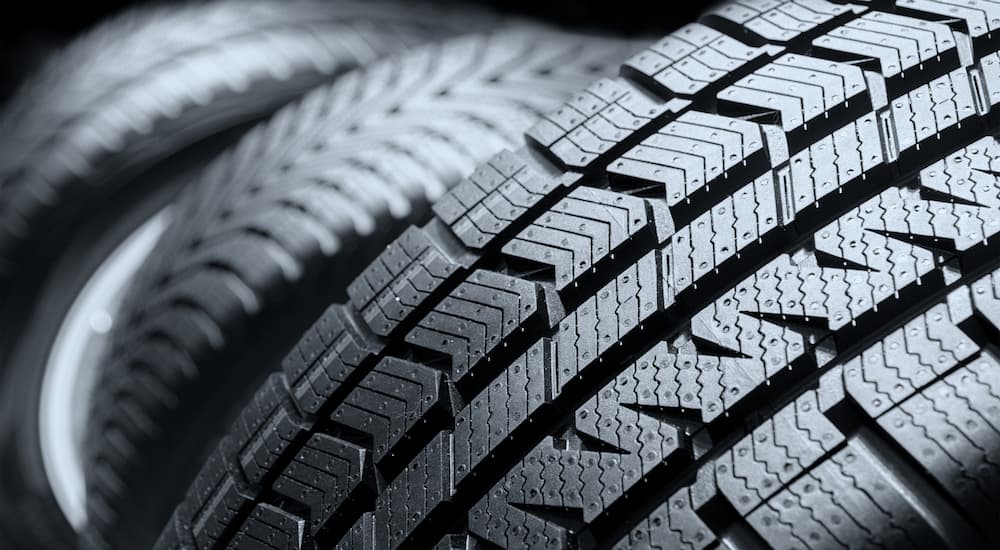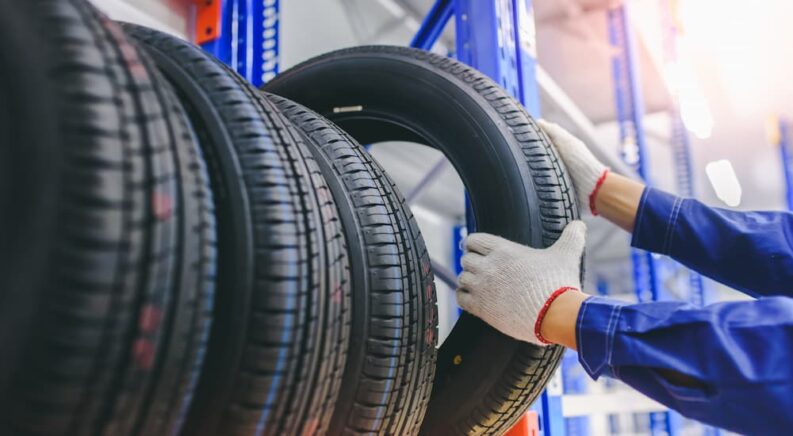Proper car care often requires a holistic approach, where the entirety of your vehicle needs to be considered rather than just individual parts. Different parts of your vehicle are interconnected and affect each other. While you sit inside your car, the steering wheel you hold is connected to a steering column, which goes to the rack housing with its rank and pinion unit, connecting to tie rods, and ultimately connecting to the front wheels of your vehicle. Similarly, your car’s suspension system has numerous components that connect to your wheels, which are each wrapped in tires.
Your steering and suspension systems are one place, in particular, where one thing in your vehicle can often affect another. For example, if your vehicle’s suspension is out of whack, it can affect how your car handles, as well as how your tires wear down over time. Vehicle alignment, whether you’re looking at two-wheel or four-wheel alignment, plays an important role in performance and drive quality. If your alignment is off, it can wear your tires down in different ways, so you can look at wear patterns on your tires to see if your alignment is out of sorts. Let’s have a look at what different wear patterns can tell you about your alignment.
Vehicle Alignment Basics
To understand what some wear patterns mean, you first need to know how wheel alignment works. Despite its name, when you adjust your wheel alignment, you’re actually looking at and adjusting your vehicle’s suspension and how your wheels connect to it. There are three main aspects of an alignment you can check and adjust. Issues with each of them can manifest as different patterns of tire wear.
The Caster
If you view your vehicle from the side and imagine the centerline of your steering axis, then the caster refers to how it is angled when sitting at rest. Positive caster means this line is angled from the suspension’s upper attachment point down toward the front of your vehicle, rather than straight up and down. A negative caster means the centerline is angled toward the rear of your car. Imagine the front wheels of a shopping cart. A negative caster is what enables these wheels to follow the path you push the cart while remaining on a swivel to turn easily. Cars are typically designed with positive caster, enabling the wheels to turn the car rather than the other way around on a shopping cart.
The Camber
Looking at your vehicle head-on, camber refers to how your wheels are angled at the top relative to the center of the wheel. Positive camber means the tops of your wheels are angled outward from the center, while negative camber indicates the tops of your wheels and tires angle inward. Different types of wear can result from negative or positive camber. Typically, alignments use a small amount of negative camber to help keep the tires planted firmly on the road when the car leans over in a corner.

The Toe
Finally, if you were above your vehicle looking down at it, then the toe alignment indicates how the front of your wheels are angled. Toe-in means your wheels angle inward toward the center of your vehicle, while toe-out means they are angled away. You can visualize this by standing and looking down at your feet. Angle your toes inward or outward to see what toe-in and toe-out look like for your car’s wheels. Alignments typically use a small amount of toe-in, which is what enables the steering to center itself if no pressure is applied to the steering wheel.
Two-Wheel vs. Four-Wheel Alignments
As the names suggest, a two-wheel alignment checks and adjusts just two wheels on your vehicle, either the front or rear axle. Four-wheel alignment, on the other hand, checks all four wheels to see how they’re set. If you have a car, a small crossover SUV, or a model with all-wheel drive, then you should get a four-wheel alignment. On the other hand, if your vehicle has a fixed rear axle, which is common on large trucks and SUVs, then you’ll only need a two-wheel front alignment. The back wheels can still be adjusted, but not aligned in the same way, since their alignment is determined by the fixed axle itself.
Common Tire Tread Wear Patterns
One of the easiest ways to tell that your alignment is off is when you need to compensate for issues while steering. For example, if you find that you need to turn your steering wheel to one side on a straightaway, or that your vehicle drifts to one side while holding your steering wheel straight, then you likely have an alignment issue. You should check your tires regularly and look at how they’re wearing to see if you need to fix your alignment. While this is not a comprehensive list, here are some of the more common tire wear patterns to look for to indicate that you need an alignment.
Excessive Wear on Shoulder
If you notice premature wearing on the inside or outside shoulder of your tires (that’s the inner or outer edge where the surface tread meets the sidewalls), then you likely have an issue with positive or negative camber. This causes your wheels to ride at an angle, wearing down your tires at the shoulders rather than smoothly across the entire tread.
Shoulder Wear and Heel-Toe Pattern
If you notice shoulder wear, be sure to also look at the rest of your tread, particularly the highest tread blocks. If you notice the blocks wearing unevenly, with high spots on the front to low spots on the back, along with shoulder wear, then you likely have an issue with positive or negative caster. Because the angle of your steering axis is off, your tires aren’t making proper contact with the road, which can impact stability and ride feel.
Diagonal Wear Across the Tread
The tread of your tires will wear down naturally while you drive, but it should be smooth, even wear across the full surface of the tread. If you notice wear patterns that run across the tread diagonally, leaving other parts unworn or with less wear, then you likely have an issue with the toe setting of your wheels. Toe in or toe out will affect the direction of the wear across the tread, indicating that your wheels aren’t rolling straight.

Irregular Wear Across the Tread
If you notice wearing across your tread that’s irregular and uneven, it can indicate that you have multiple issues with your alignment. Similarly, you might see two of the previous patterns we looked at together, such as diagonal wear across your tread and excess wearing on the shoulder of your tires. This can indicate you have problems with both the camber and toe, which means you need to adjust your alignment right away.
Other Wear Patterns
I should note that there are plenty of other types of tire wear that can occur, which might not be related to your alignment. For example, if you notice the center of your tires is wearing out before the rest of your tread, then your tires might be overinflated. Similarly, underinflated tires tend to wear out on their shoulders, since they lack proper pressure to keep weight evenly spread across them. Low tire pressure will wear down both shoulders on your tires at the same time, while only one shoulder being worn usually indicates a camber issue.
Learn to Troubleshoot Your Tires
Your tires can tell you a lot about your vehicle if you let them and know how to read them. Learning to read your tires can have a big impact on your driving experience each day and help you get ahead of issues with your vehicle before they become serious problems. It’s much easier to have your alignment adjusted (or do it yourself if you have the equipment and experience) than to have a blowout on the freeway because your tires have worn unevenly and been damaged. It only takes a few minutes every couple of days to check your tires over and make sure they look good, but the time it saves you can be immense. Just remember that if you do find a problem, you need to fix it right away to avoid major trouble or a potential disaster.

